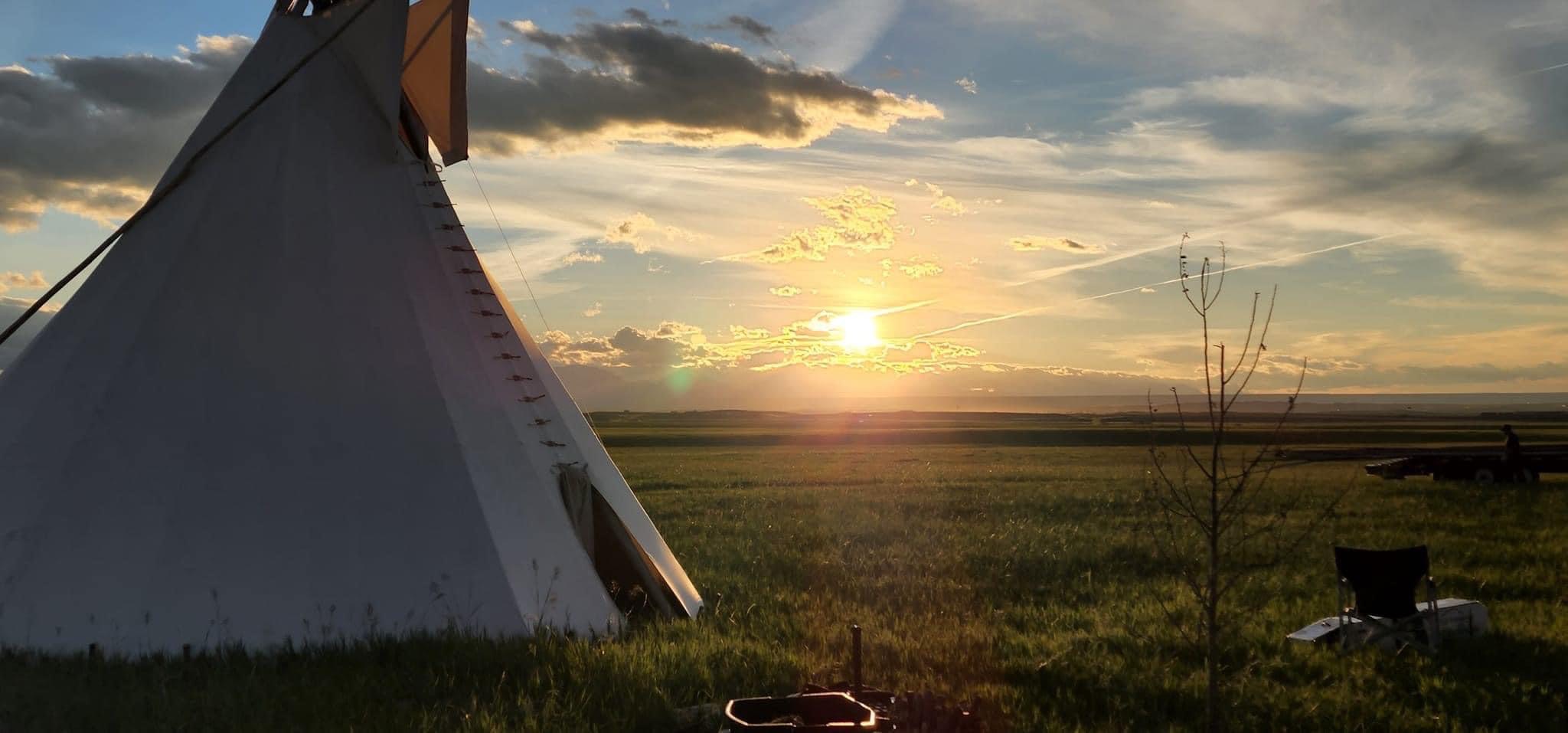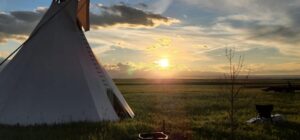
by Lea Wetzel, Drop-in Center Coordinator
May 2, 2023
The arrival of Native American Heritage Month heralds a deeply personal journey for me, a Blackfoot woman steadfastly navigating the intricate path of recovery. Within the expansive tapestry of indigenous cultures, I discover not only solace and strength but a profound connection to my roots that serves as the cornerstone of my journey of self-discovery. Engaged in tribal liaison work with Montana tribes, this month transcends mere celebration; it stands as a testament to the transformative power of cultural heritage, weaving through my role as a mother and illuminating the unique lens of recovery from an American Indian woman's perspective.
For me, Native American Heritage Month becomes an annual reflection, a sacred space to contemplate the indelible impact of ceremonial beliefs on shaping my identity. As a Blackfoot woman, the ceremonies and traditions handed down through generations are more than just practices; they are profound sources of guidance and healing, a way of life. Embracing my heritage becomes a key that unlocks self-discovery amid the tumultuous terrain of recovery, providing a spiritual anchor that transcends immediate struggles, connecting me to a legacy that predates and outlasts adversity. I pass these ways down to my children, which impacts them to be proud, stagnant, and have purpose through their own journeys.
Implementing these beliefs and ways throughout the work I do with tribal drop-in centers, peer support, past pilot projects, and state-wide initiatives within human trafficking and missing and murdered Indigenous People campaigns. By me working on tribal engagement liaison work in Montana, amplifies the significance of Native American Heritage Month to me. This endeavor becomes more than a professional commitment; it's an opportunity to bridge communities, fostering understanding and collaboration.
As a Blackfoot woman in recovery, the liaison work becomes a conduit for contributing to the preservation and appreciation of diverse tribal cultures, creating connections that transcend geographical borders, uniting us in a shared heritage that goes beyond words.
In the vast expanse of history, the First Nations peoples, originating from Turtle Island, encompassing North America, Canada, South America, and parts of Central America, have weathered countless storms, and emerged as resilient keepers of an intricate cultural tapestry. Today, there are 574 recognized tribes, with even more existing without federal recognition. Within my state, 12 tribes and 7 territories stand as sovereign entities, each weaving their unique form of government into the rich fabric of the land. Through the lens of this diverse heritage, I explore the profound interconnectedness and beliefs that have shaped the identity of Indigenous peoples for generations.
Within the realm of First Nations, diversity is not a divergence but a celebration. There exists a profound understanding that no two tribes, bands, clans, or societies share identical traditions. The beauty lies in the multi-dimensional nature of our culture, where there is no room for shame, guilt, or pride—only true humility. The cultural richness is exemplified by all tribes, each with its distinct government and symbolic flag representing unique cultures and histories.
 Embedded within this cultural lineage is a universal belief that transcends tribal boundaries—the belief that everything and everyone is interconnected. This profound connection extends beyond the visible world, encompassing animals, earth, stars, air, water, and the realms seen and unseen. The Medicine Wheel teachings, a shared cultural resource, illustrate the interconnectedness and serve as a beacon for recovery, emphasizing balance and harmony within the self and the universe.
Embedded within this cultural lineage is a universal belief that transcends tribal boundaries—the belief that everything and everyone is interconnected. This profound connection extends beyond the visible world, encompassing animals, earth, stars, air, water, and the realms seen and unseen. The Medicine Wheel teachings, a shared cultural resource, illustrate the interconnectedness and serve as a beacon for recovery, emphasizing balance and harmony within the self and the universe.
Reflecting on the Dog Days, a time preceding the era of horse-aided migration, reveals a harmonious existence where humans, nature, and animals coexisted in balance. In this era, women held a unique and powerful role as life-givers and leaders. The Amskapii Piikani women, exemplifying strength, and resilience, engaged in hunting, cooking, and even battled alongside their male counterparts. The legacy of empowered women endures through societies dedicated to women's headdresses, pipes, and bundles.
As Indigenous people, our identity is deeply rooted in our connection to the Earth, Sky, Stars, and Water. Creation stories describe us as "fire people," embodying the Red Spectrum of the Medicine Wheel. Many Indigenous individuals are reconnecting with these ancient ways, drawing from the wellspring of knowledge passed down through generations. The healing process is not merely individual but spans seven generations, acknowledging the impact of our actions on three generations before us, three generations after us, and the crucial seventh generation—ourselves. This concept is originated from and for Native American beliefs, now utilized cross culturally through other heritages voices.
Beginning in 1887, the federal government initiated a campaign to "Americanize" Native Americans, focusing on westernized education that aimed to erase tribal cultures. Boarding schools like the U.S. Training and Industrial School at Carlisle Barracks, Pennsylvania, implemented harsh methods to strip away tribal identity. Students were forced to abandon Indian names, forbidden from speaking native languages, and had their hair cut, as it was believed to hold significant power. Captain Richard H. Pratt, founder of Carlisle, employed brutal methods, famously advocating to "Kill the Indian, Save the Man." This campaign reflected not only the erasure of culture but also an underlying sentiment that fueled Indian massacres.
The brutal history continued as Indigenous people endured beatings, rape, and murder for practicing their native ways. Genocide claimed nearly 98% of the population, with settlers studying their customs. Into the 1970s, Indigenous women faced forced sterilizations without consent. Cumulative trauma and fear drove many cultural practices underground.
There have been over 10,000 bodies found as of now and there are many more to be found, within the movement of healing the residential and boarding school era. Around 160 residential schools have been searched, and there are over 550 residential schools in North America, in 2022, and I am sure this number has changed to date. Intergenerational Trauma affects the descendants of a person who has experienced a terrifying event and it’s passed down from generation to generation, through our DNA.
Historical trauma is the cumulative, multigenerational, collective experience of emotional and psychological injury in Indigenous communities and in descendants.
There are reasons behind actions, reactions, and the need to preserve or keep our identity. Cultural awareness of our past has a huge impact in how we attempt to support our Indigenous Relatives. How we overcome is through information like this. Bringing awareness and learning about what really happened, can allow healing to start to take place. When something is justified and validated in anyone’s life, then healing may start to take place, within a trauma-informed safe space. Always including a cultural sensitized perspective. Just like with anyone’s healing journey, we had to face a lot, before we could accept and do what’s needed to continue to heal and grow.
In 1978, a pivotal moment occurred with the legalization of Native Americans' right to speak their native tongue, practice ceremonies, and express their cultural identity freely. This marked a turning point, allowing Indigenous communities to emerge from the shadows of fear and reclaim their heritage. History and facts show forth that we are still working to lessen stigma and offer a more culturally diverse atmosphere. There is power in knowledge of who one is, and where we come from.
There are sacred principles within Cultural Continuity: Believing, Relating. Cultural continuity is the ability to preserve the historical traditions of a culture and carry them forward with that culture into the future, closely linked to the concept of cultural identity. Cultivation, defined as raising, growing, and preparing the use of soil, is mirrored in the endeavor to cultivate culture through the reconnection and sharing of cultural knowledge.
Cultural Synergy is an attempt to bring two or more cultures together to form an organization or environment based on combined strengths, concepts, and skills. Culture serves as prevention, a bridge of connection for others, and a powerful tool in supporting others. Culture is collective, and principles like Cultural Continuity and Cultural Synergy can build a cross-cultural paradigm shared among Indigenous communities. Both Westernized Evidence-Based Principles and Traditional Principles prove helpful. Through Cultural Synergy, multiple pathways can be developed to support and heal us and others—a powerful permission to seek out and be open to various ways of healing and supporting others.
Integrating sacred principles such as Cultural Continuity: Believing, Relating and Cultural Synergy, can be essential. Cultural Humility concepts were originally developed by Dr. Jan Murray & Melanie Turvalon. In this framework it emphasizes the importance of critical self-reflection, redressing power imbalances, developing mutually beneficial partnerships, and advocating for institutional accountability. This framework serves as a guide to connect and be mindful to all walks of life and individuals supported within the community.
This perception challenges the concept of Cultural Competency, asserting that even as an Amskapii Piikani band member of the Blackfoot confederated nation, achieving complete competency in Native American ways is an ongoing process. Being in a lifelong journey of learning, growing, healing, and reconnecting to traditional ways, I am far from being competent in my own culture, but I can have cultural humility. That means, that cultural competency is perspective of someone that sees themselves as being a “Master” of one’s culture. If I am not competent in my own culture, then how can an outsider of my culture be competent in another’s culture? Humility is the answer to many issues in the world, including that humility is a vital principle in a healing and recovery journey. What one may perceive a word to mean can be completely different from what another culture believes a word or phrase means. Speaking of something, in the Native American culture, means you are speaking it out into existence. I am taught by my Elders, that our words are “Sharp,” and they are also very “Powerful.” Being mindful and having humility can allow you to integrate this Native American belief and hold a more sacred and safe space for those you encounter.
The framework of critical self-reflection, redressing power imbalances, and developing mutually beneficial partnerships is essential to this continuous learning process, and for others to inherit and implement into their own lives. This is what our heritage thrives on, continuing to break barriers, stigma, and decolonize the world we live in, through educating and believing in principles like these. This is the month that signifies decolonization of Turtle Island.
Being in a movement of “Intergenerational Healing” first highlighted by Ms. Theda NewBreast of Native Wellness Institute, is not only internal, but it also is utilized externally within my work, and life. Organizations like Native Fatherhood and Families Association, White Bison Inc., Native Wellness Institute, Return to the Heart Foundation, Indigenous Vision, Native Wellness Magazine, are a few examples of places to gain more knowledge for those who may be interested in learning and growing through intertribal and Universal American Indian traditions.
The personal resonance of Native American Heritage Month deepens when viewed through the lens of resilience in the face of trauma. My journey through recovery bears the weight of profound losses, marked by the absence of my father and brother. In these moments of darkness, the cultural teachings inherited from my Blackfoot heritage prove instrumental. The ceremonies and stories passed down through generations become a powerful framework for healing, enabling me to confront and work through past pains with a strength grounded in cultural understanding.
As a mother, Native American Heritage Month assumes an added layer of significance, evolving into an opportunity to instill pride and reverence for Blackfoot heritage in my children. Through the art of storytelling, participation in ceremonies, and engagement with tribal communities, I strive to pass on the rich cultural legacy that has been a guiding force in my own life. In celebrating our shared heritage, I aim to equip my children with the resilience and wisdom embedded in our traditions, forging a bridge to their own identities.
I felt an internal connection and “Transfer” of knowledge of my Amskapii Pikkani ways when I received my second Blackfoot name. I was 19 when I was transferred my name,” Poonoakii,” Elk Woman. We are given up to four stories when we are given our name, in our tribal ways. The story behind your name amplifies the power within who you are, where you have been, and where and what you are becoming and going in your journey. There is so much for me to learn in my culture, and we as Native American get to celebrate our cultural heritage everyday of our lives. This month is significant within the journey of all American Indian people, but it doesn’t stop here, it continues through our journey of everyday living and everyday meaning.
Recovery, as witnessed through the eyes of an American Indian woman, is a multifaceted journey intricately interwoven with cultural identity. Native American Heritage Month serves as a poignant reminder of the intersection between the two, highlighting the holistic approach to recovery found in the ceremonies and beliefs rooted in my Blackfoot heritage. It is a reminder that recovery transcends the mere overcoming of challenges; it is a transformative process of reclaiming and embracing one's true self, a process illuminated by the cultural lens through which I navigate it.
Native American Heritage Month unfolds as a celebration, a remembrance, and a deeply personal journey of discovery. As a Blackfoot woman in recovery, this month offers a unique opportunity to intertwine my personal narrative with the broader story of indigenous cultures. It is a time to honor the past, engage with the present, and contribute to the preservation of a cultural legacy that sustains and uplifts. In embracing my Blackfoot heritage, I discover not only a source of strength but a roadmap for navigating the complexities of life, recovery, and the intergenerational transmission of cultural resilience—an ongoing odyssey of discovery and achievement through the eyes of an American Indian woman.

